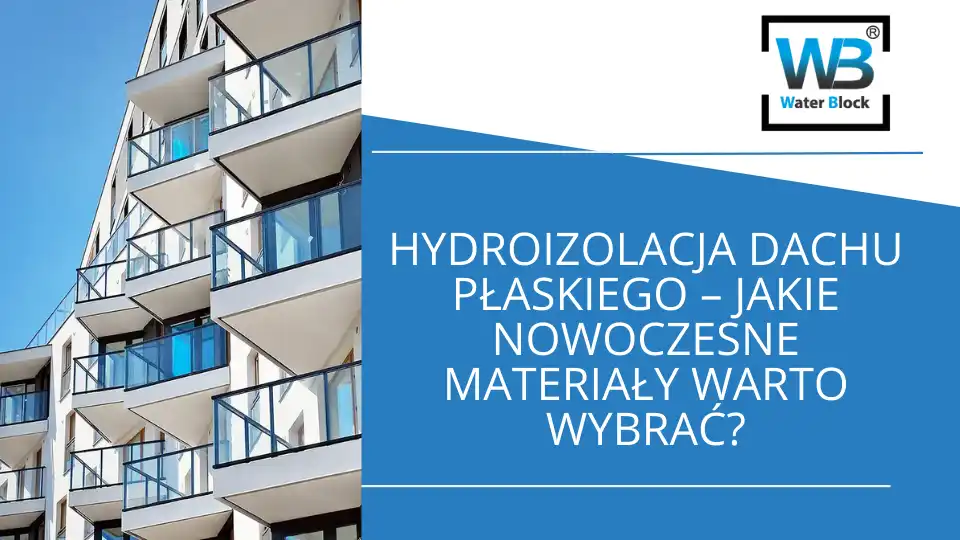Roof waterproofing Flat roof insulation is a key component of roof construction and renovation to provide effective protection against moisture. In recent years, a number of modern m1TP2insulation materials have appeared on the market that significantly improve the quality and durability of flat roofs. Choosing the right waterproofing technologiesYou can extend the life of your structure and keep it safe for years to come. In this article, we will discuss the latest developments and the advantages of innovative flat roof waterproofing products.
Why is waterproofing a flat roof important?
Roof waterproofing flat plays a key role in ensuring the long-term protection of your home or building. The first and most important task of waterproofing is to create a moisture barrierwhich protects the roof from rainwater and moisture. Without proper sealing of the roof, serious problems such as damp patches, mould and degradation of the m1TP2Structural materials can occur.
In Poland, where the climate is characterised by wide temperature fluctuations and heavy rainfall, suitable roof protection is downright essential. In winter, roofs are exposed to heavy snow loads and in summer to intense solar radiation. Therefore, weather resistance is crucial and should take into account extreme cold as well as heavy rainfall and scorching sun.
Effective waterproofing is also an investment in the future. Roof sealing prevents water penetration, minimising the risk of internal damage and the need for costly repairs. Robust moisture barrier is a guarantee of comfort and security for residents for many years to come.
Modern materiles for flat roof waterproofing
Contemporary waterproofing technology offers a wide range of solutions that provide effective water protection for flat roofs. Key m1TP2Bodies that have gained popularity include. waterproofing membranes, roofing membranes and different types of waterproofing films. Choosing the right m1TP2Material depends on a number of factors that need to be considered before making a final decision.
Heat-sealable membranes is one of the most frequently selected m1TP2Materials for waterproofing flat roofs. They are characterised by exceptional durability and weather resistance. Their flexibility and ease of application make them a suitable option for a wide variety of roof constructions.
Another modern solution is roofing membranes. They are valued for their durability and efficiency over a long period of use. Roofing membranes made of m1TP2Materials, such as EPDM, provide not only an excellent seal, but also flexibility, which is an important parameter when dealing with structural movements of the roof.
There are several factors to consider when choosing m1TP2insulation materials:
- Sustainability - How long will m1TP2Body maintain its waterproofing properties?
- Flexibility - Is m1TP2Body resistant to cracking and stress?
- Cost - What are the costs of purchasing and installing the m1TP2Body?
- Ease of application - Is any specialised equipment or skills required?
With so many options available, an informed selection of m1TP2insulation materials is crucial to the effectiveness of flat roof protection. Remember that a well-selected m1TP2Body will not only prolong the life of your roof, but also minimise maintenance costs in the future.
Flat roof waterproofing using EPDM membranes
Considering modern methods of waterproofing flat roofs, EPDM membranes emerge as one of the best choices. Firstly, the EPDM installation technology is relatively simple, allowing the work to be carried out quickly and efficiently. EPDM installation is based on welding or gluing the panels together, which ensures tightness and prevents leakage.
Durability of membranes EPDM is another advantage that makes them so popular. Materhese materials are UV-resistant and also exhibit a high degree of flexibility, allowing them to adapt to the movement of roofs without the risk of cracking or damage. As a result, durability of membranes EPDM is far superior to other traditional solutions.
One of the key points that makes EPDM membranes excellent choice, is their environmental aspect. Ecological waterproofing solutions is one of the main advantages of using m1TP2PEDM materials. They are fully recyclable and do not emit harmful substances during use. This makes them environmentally friendly, in line with modern sustainable building standards.
On the Polish market, these membranes have gained recognition for their reliability. Experts emphasise their high quality and versatility of application. In a variety of projects, from residential buildings to industrial complexes, EPDM membranes have proven themselves as a reliable means of long-term waterproofing of flat roofs.
- Ease of EPDM installations.
- High resistance to UV radiation.
- Flexibility and adaptation to construction movements.
- Minimal maintenance required.
Inference, EPDM membranes are an extremely versatile solution for waterproofing flat roofs, combining both sustainability and ecology.
How to waterproof a flat roof properly?
Correct roof waterproofing flat is the key to ensuring longevity and effective water protection. It is essential that the surface is thoroughly prepared before starting work. Make sure the roof is clean, dry and free of any debris. This process also includes checking dips and drains.
You can then proceed to insulation application. Choosing the right m1TP2Materials, such as EPDM membranes, is crucial. These m1TP2Materials have high weather resistance and provide long-lasting protection. It is worth opting for professional waterproofing by specialists who have the experience and the right tools for the job.
To ensure the effectiveness of the waterproofing carried out, regular roof quality control. It is important to check the condition of the insulation after each season and after heavy rainfall. In this way, any damage can be detected quickly and any insulation maintenance, which will increase its lifespan.
Avoiding common pitfalls such as inappropriate insulation application whether the use of inappropriate m1TP2Materials can significantly increase the effectiveness of roof protection. Remember to ensure that any action follows the manufacturer's recommendations and building standards. Following these steps will ensure a durable and effective flat roof waterproofing, protecting your building from damp for years to come.

